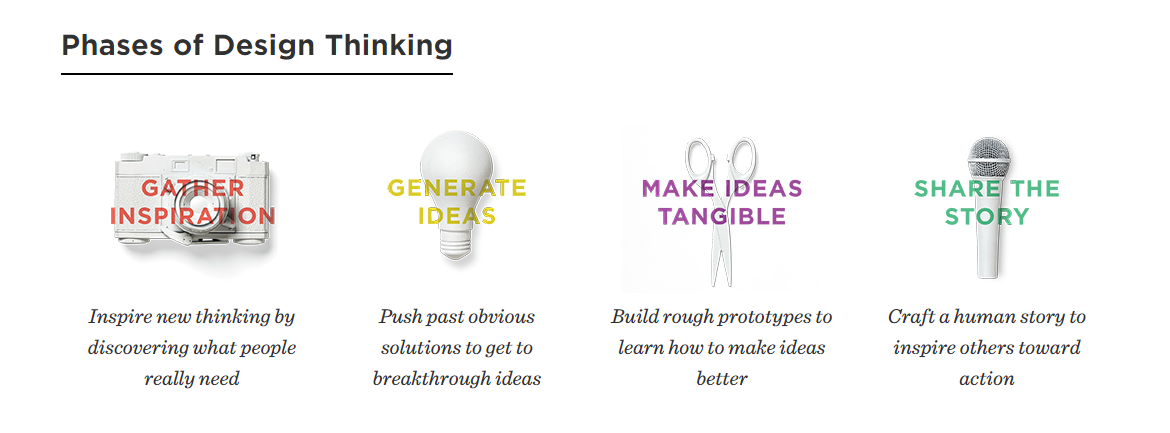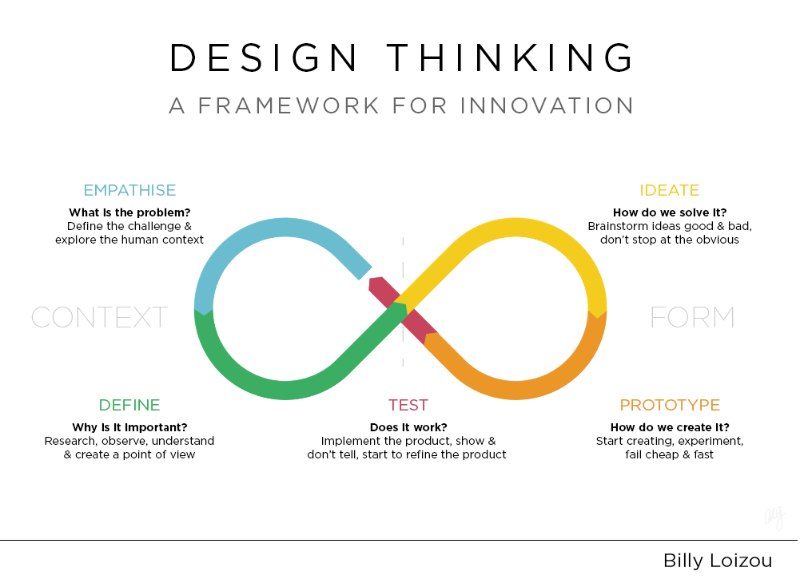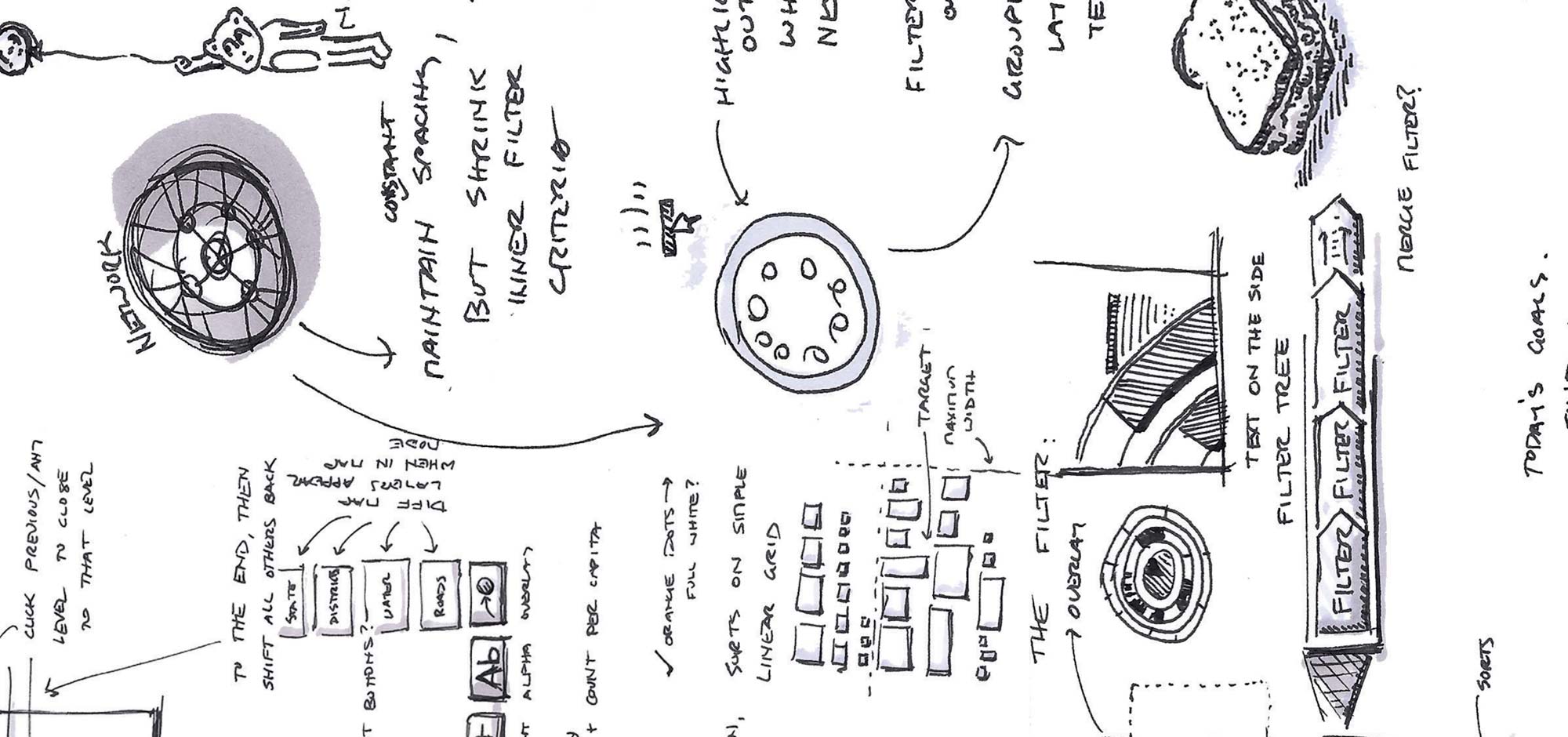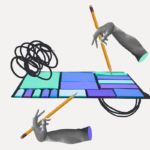Solving problems always consist of a bit of organizing, plenty of deep breaths and a lot of creativity.
Designers are some of the world’s most creative minds, and it isn’t because of their prowess and expertise on Adobe’s Creative Suite.
Great designers have a special mindset on how to solve problems, and it is this particular mindset that sets them apart, but this doesn’t mean you have to be a designer and understand photoshop to be able to use this mindset.
Design Thinking (DT) is an interesting way of thinking that, funny enough, anyone can do even if they know nothing about art and design. It works with all types of situations and problems.
- Advertisement -
From creative matters to business and organizational issues, DT helps as one of the most useful problem-solving mindsets.
Design Thinking and what it means
Earlier this year, we quickly spoke about DT during our 7 Must-Have Skills Every Marketer Should Master article, in which we defined it as
“a problem-solving thinking process that focuses on the user/consumer, integrating user needs, possibilities of technology, and the requirements needed for success. It is a method for practical and creative solutions for problems that was inspired by designers, but one that ultimately can provide a lot of help in the marketing business.”
Simply, it is a way of thinking that emphasizes more on looking at people or consumers’ needs and desires to find a solution to a problem they have that is practical, desirable and viable to create/do.
Designers are the most famous for using this way of thinking.
Designers and creatives have the unique job of finding ways to visualize messages. The visuals they create have to be something that the target already wants to see, be something they desire and practical for easy understanding.
The problem doesn’t get solved by looking at a product, but by looking at consumers and stakeholders and what they want to see or hear.
Design Thinking teaches its user how to creatively come up and produce a creative, truly desired, solution to a user or consumer problem. It also encourages using new technologies and theories to create the solution.
How does it work?
There are 2 main ways that DT is structured.
It is also important to note that DT is a non-linear thinking method. This means that it encourages returning to previous steps and stages to continue evolving your solutions.
The IDEO (Int. design and consultancy company), whose CEO repopularized the DT methodology in a 2009 TED talk, focuses on 3 main stages of the DT process.
It focuses on the stages of Inspiration, Ideation and Implementation.
Famed Creative Director Stephen Gates, a certified IDEO DT trainer, uses his years of experience teaching DT to explain it in a series of short podcasts.
You can listen to Gates’s podcast through these links; podcast 1, 2, and 3.
IDEO’s online university also provides a quick explanation to their methodology.

Other popular variations focus on 5 or 6 steps, just like how the D.School of Stanford (the Institute of Design at Stanford) teaches its students. They focus on the stages of Empathize, Define, Ideate, Prototype and Test.
Empathize
The first step in this people-centered methodology is to find a deeper understanding of the people you are creating a solution for. You’ll have to know their beliefs, norms, and values through immersion, interviewing and observation.
For many in the marketing field, this can feel very close to the creation of buyer personas. The difference is the depth of your observation.
DT asks you to really put on your consumers’ shoes, to feel the experience of your brand or problem as they would. It encourages you to truly immerse yourself after observing and interviewing.
Define
Now we move from observation to insights, and away from traditional persona creation. Here we define our consumer and establish their point of view (POV) which we will be putting our minds into through the DT process.
When we finally pinpoint our consumer’s needs then we are able to highlight opportunities to for innovation.
Ideate
Uncensored brainstorming, or a brain dump as some would call it. Innovation and countless ideas can be found during the ideation stage, as long as you remember that it is a collaborative stage that isn’t about quality, it’s about quantity.
A way to focus during this stage would be the use of the HMW method (How Might We).
These are questions you should ask to help focus the group. Questions should be broad enough that there can be a wide range of solutions but narrow enough to keep focus and create certain boundaries.

Prototype
Your prototype is the first tangible item you’ll have, created from the solutions you came up with during the ideation stage. With prototypes, it is important to start low-budget, around 100 – 200 EGP is more than enough.
Start with home craft items such as paper and glue or use sticky notes on a wall for interactive products such as websites or a travel experience. For creative solutions, sketches and whiteboards will be great friends.
This stage is about finding out what goes together and what doesn’t, it simplifies and defines the problem even more which can offer more insights and other solutions you didn’t think of before.
Don’t forget, DT is a flexible thought process and it is absolutely normal to go back to various stages at any time.
Test
You have your prototype, and now it’s time to test it out in the real world.
Get information from the experience of users, redefine or edit your users’ POV, and maybe even brainstorm more ways to better your solution.
This is the best time for you to get feedback that can improve your prototype and solution as a whole.
Examples of DT
There are many examples out there, as many businesses have found that DT has saved them from closing, but these are some of the most recognizable.
Netflix
Netflix started out as a DVD-by-mail service in 1997, but through years of emphasizing and testing, they have become the world’s biggest streaming service.
Netflix’s overhaul from DVD to online streaming, and upgrades such as from static posters to preview videos and subscriptions for family members, shows how dedicated they are to the consumer experience.
Airbnb
At the start of Airbnb’s life, its founders struggled with getting enough bookings.
One day they looked through their New York listings and found a problem, the photos by the hosts were dark, blurry and taken with phone cameras (the type that were 3MP).
They realized that customers wouldn’t book if they weren’t sure of how the place would look. So, they rented a camera, flew to NY and took free high-quality photos of the bookings with the hosts.
Once the photos were uploaded, bookings quickly rose.
By focusing on the customer experience, they realized a mundane issue that turned out becoming a lifesaver for the company.
Another issue arose in 2012, when some of the homes being rented out were damaged by customers. Airbnb used DT to emphasize with their hosts, another important stakeholder, and started a new insurance policy that would cover up to $1 million in damages.
Applying Design Thinking
As marketers or business owners, it is easy to focus on creating strategies and products and forget the key component for success. The Consumer.
Applying Design Thinking, and making your team aware of it, can help in getting back to the core of success. To create a creative solution people really want or a great buyer journey.
Interested in Design Thinking? Let us know in the comments if you’re interested in more articles about it.








